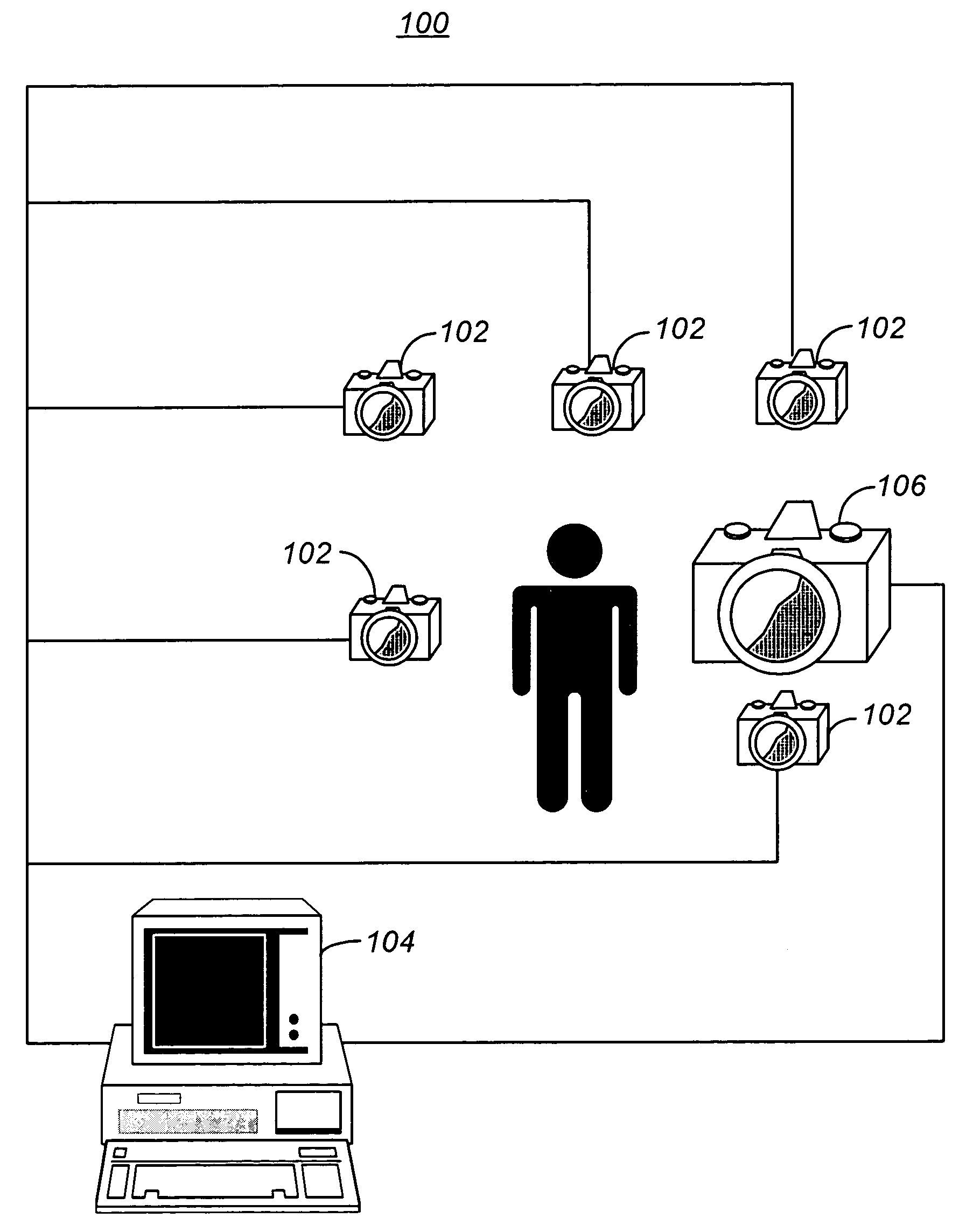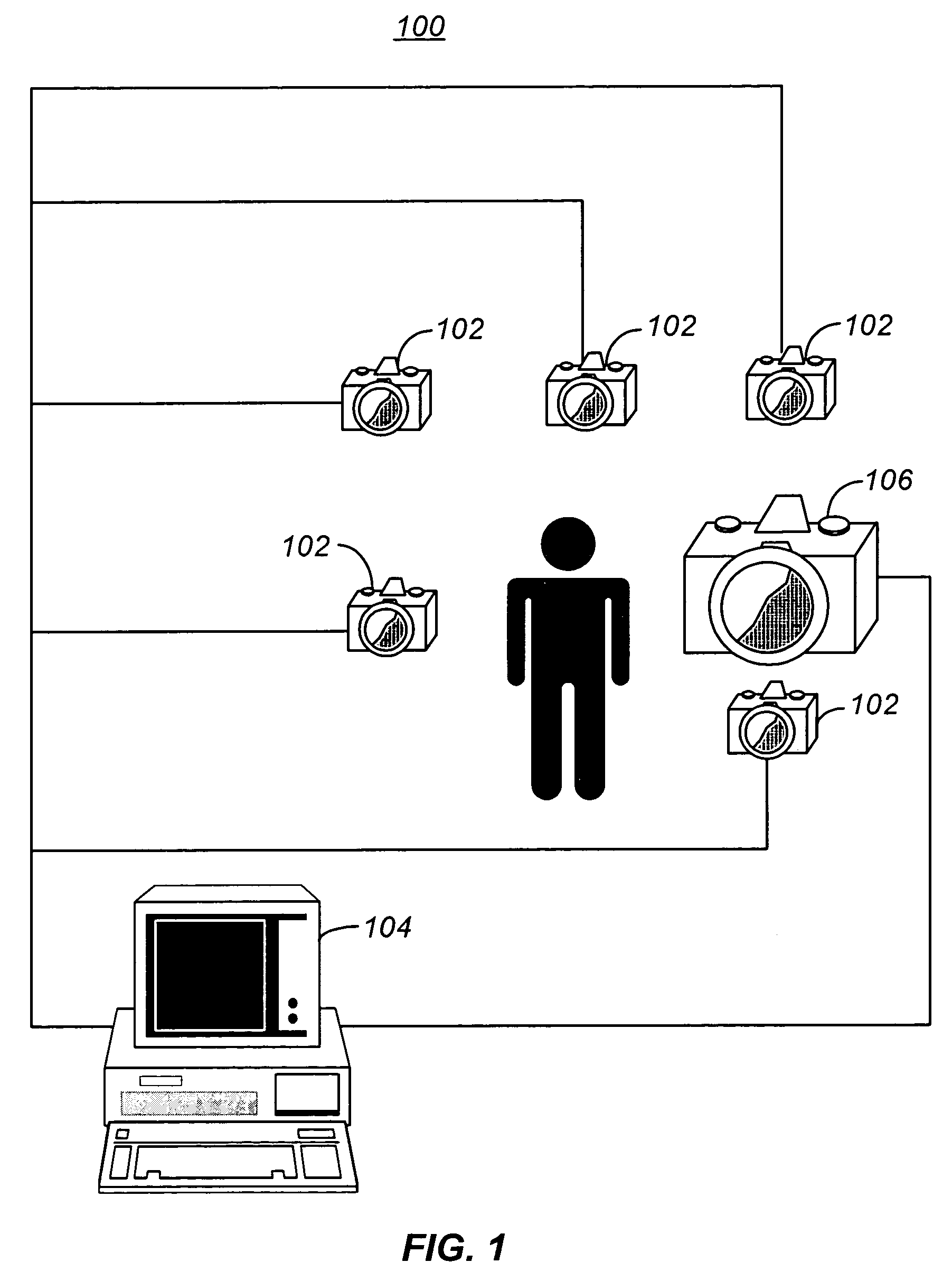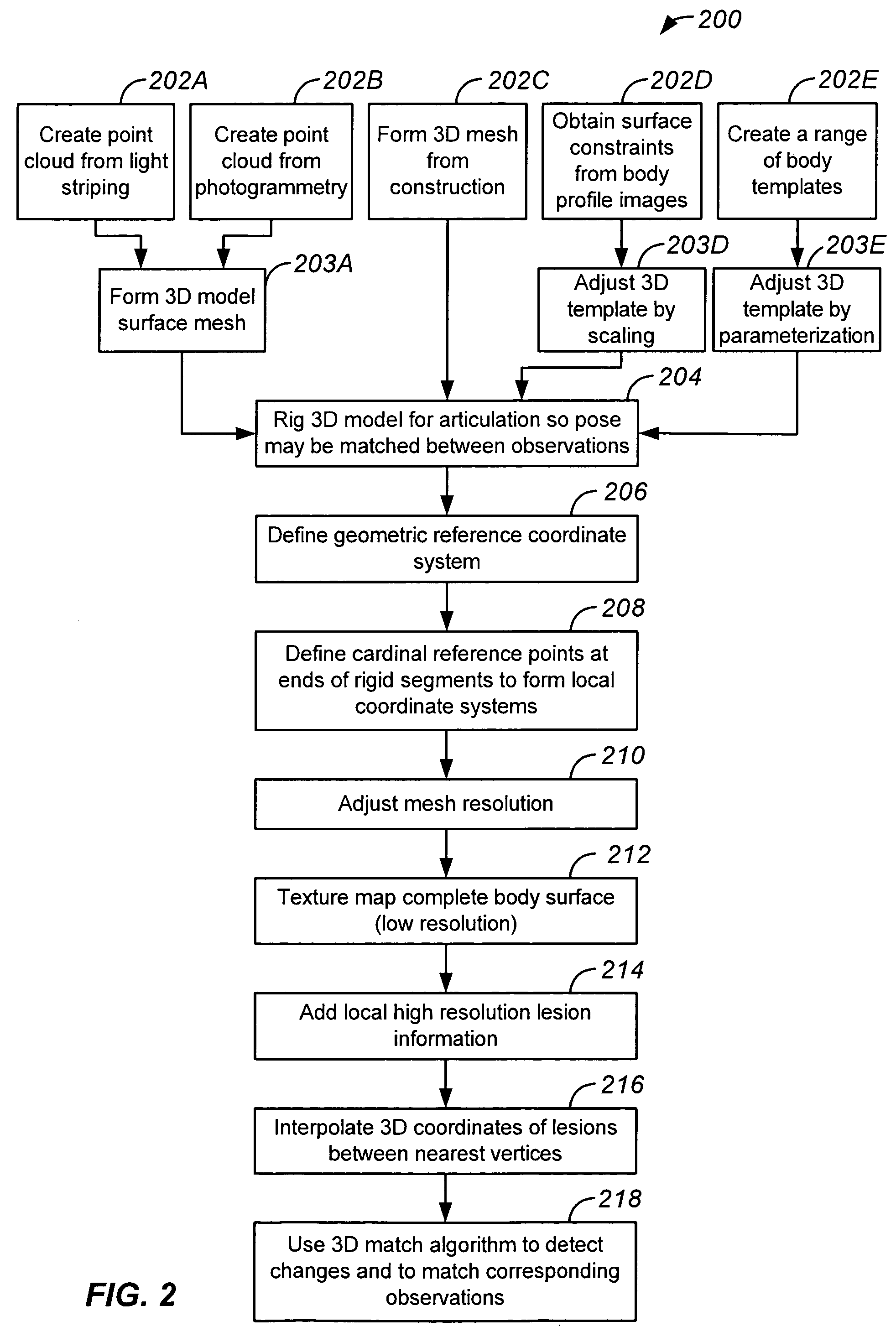Method of indexing biological imaging data using a three-dimensional body representation
a biological imaging and body representation technology, applied in the field of imaging data management methods and systems, can solve the problems of not all of the images in the diagnostic database are diagnostically relevant, difficult organizational tasks, and often non-uniform medical information on the state of a patient, and achieve the effect of high resolution
- Summary
- Abstract
- Description
- Claims
- Application Information
AI Technical Summary
Benefits of technology
Problems solved by technology
Method used
Image
Examples
Embodiment Construction
[0014]Embodiments of the present invention provide an information structure that is used to organize medical imaging data. In particular, embodiments of the invention use a three-dimensional representation of the body of a human which has been adapted to or obtained directly from an individual patient as a frame of reference for medical imaging data. A three-dimensional representation of the body surface of a patient, being a mathematical representation, has an intrinsic coordinate system that very intuitively lends itself for use as an index for medical imaging data.
[0015]The embodiments of the present invention combine the advances in computer hardware, software and sensor technology in the areas of three-dimensional model building to provide a three-dimensional representation of the surface of the body of a patient to organize medical data obtained from the patient. The use of a three-dimensional representation enables medical data, including medical imaging data to be linked to ...
PUM
 Login to View More
Login to View More Abstract
Description
Claims
Application Information
 Login to View More
Login to View More - R&D
- Intellectual Property
- Life Sciences
- Materials
- Tech Scout
- Unparalleled Data Quality
- Higher Quality Content
- 60% Fewer Hallucinations
Browse by: Latest US Patents, China's latest patents, Technical Efficacy Thesaurus, Application Domain, Technology Topic, Popular Technical Reports.
© 2025 PatSnap. All rights reserved.Legal|Privacy policy|Modern Slavery Act Transparency Statement|Sitemap|About US| Contact US: help@patsnap.com



